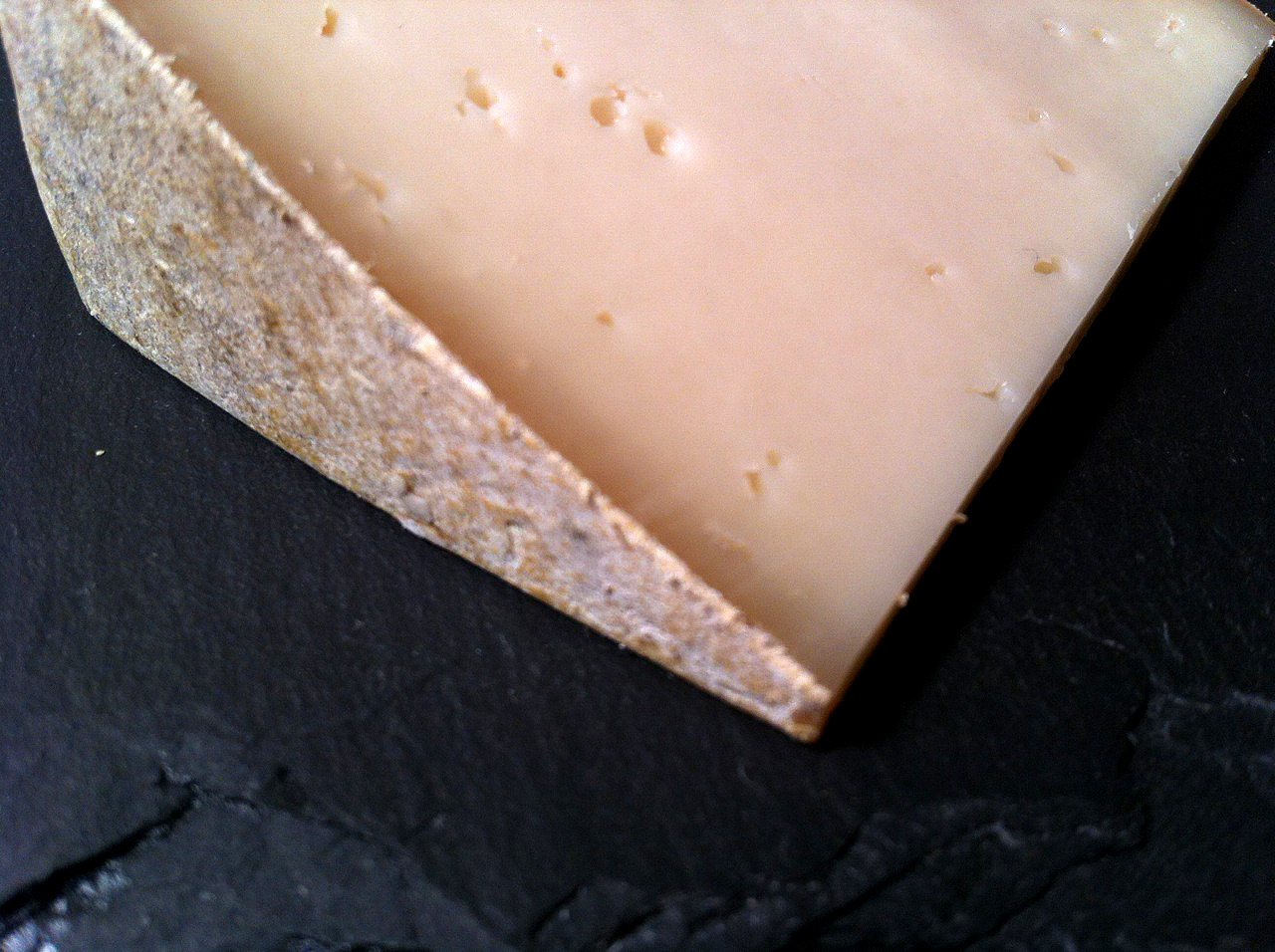 Haystack Mountain |
One interesting side note about the company is that Haystack Mountain's president, Chuck Hellmer, has a serious dairy allergy. It was his allergy that forced him to search for an alternative to cow's milk cheeses. That, in turn, led him to Haystack Mountain cheeses. Goat milk is often easier for people to digest, because it contains much less Alpha s1 Casein, the protein allergen that most people react to when it comes to dairy. Fortunately for Chris, finding cheeses he could eat also led him to a job running the goat dairy.
 |
| Queso de Mano |
Queso de Mano literally translates as "cheese of the hand" and is often used in cooking. This one need not be cooked to be enjoyed, though. In fact, it makes for just about the most perfect snacking cheese I have ever had. Though many would suggest eating the cheese with apples or pears, I prefer it either by itself or on a hunk of crusty bread.
Haystack Mountain's version of Queso de Mano has a curious thin natural rind with bluish tones. My first impression of the cheese came from the lovely aroma that floated up to my nostrils. Immediately I thought of how Brie smells. This is very similar. I had a feeling I would like it. The texture is oddly fluffy and crumbly for a semi-hard cheese. It's as if they took the qualities of a fresh chevre and somehow shoved them into this aged creation. Unlike a fresh cheese, though, your mouth won't be coated in dairy residue. This has a drier finish. The cheese is subtle both in texture and flavor, but it still has a bite to it. It's just that the tang is balanced nicely.
As for the flavor, it is heavenly. It's not overly goaty, and it's a cheese I could eat every day without getting bored. I know it's the perfect cheese to add to pasta dishes or to put in sandwiches, but I love it on its own. The thin rind is chewy and packed with earthy flavors. There's a definite bloomy rind taste that is reminiscent of button mushrooms, and as you work your way to the center of the cheese, the flavor becomes more subtle while still retaining the earthy, mushroomy and nutty notes. The tangy kick that many goat cheeses give off is subdued here. It's the perfect cheese to introduce to people who have never tried a goat cheese before and might be hesitant. It goes with just about everything I can think of, from potatoes to black olives to fruit.
As far as pairings, I could see this cheese going well with a full-bodied red or even a sweeter dessert wine, depending on your preference, and though it might go against what some people would suggest, certain fruity but crisp white wines would definitely go very nicely with this cheese. That's how I would serve it. Imagine a light summer lunch of Queso de Mano, a baguette, some grapes and a glass of white wine. Perfection.

Sancerre Sauvignon Blanc
 |
| Sancerre Sauvignon Blanc |
No comments:
Post a Comment